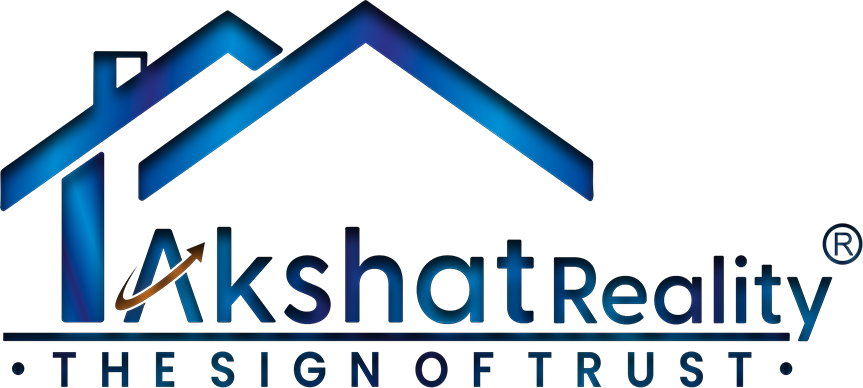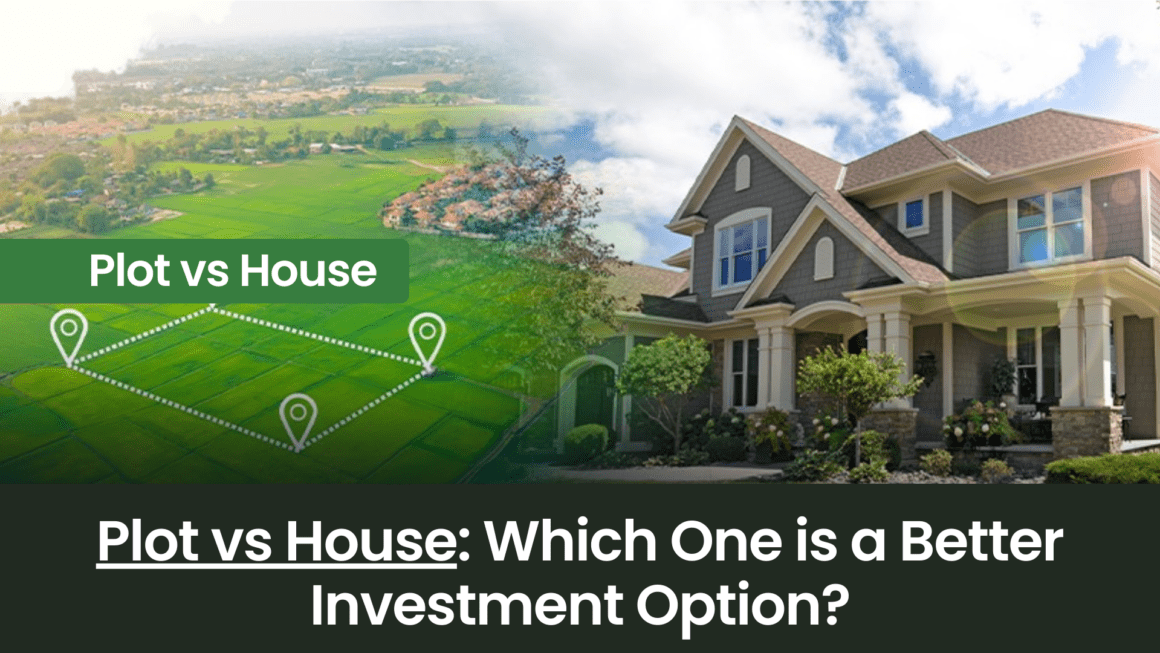Investing in real estate has long been considered a profitable and secure means of building wealth. Among the many choices available to real estate investors, the decision between purchasing a plot or house deserves careful consideration. Both options come with their own set of advantages and disadvantages, making it essential for investors to thoroughly analyze their needs and long-term goals before making a decision. In this blog, we will explore the pros and cons of investing in a plot or house as an best investment option.
Pros and Cons of Investing in a plot or house –
Investing in Plots: The Pros 
- Flexibility and Creativity: One of the key advantages of investing in a plot of land is the freedom it provides. Investors have the opportunity to develop the land according to their vision and needs. Whether it’s building a dream home, a commercial property, or even starting an agricultural venture, the possibilities are limitless. This flexibility allows investors to tailor the investment to suit their goals.
- Appreciation Potential: Historically, land has shown a tendency to appreciate over time. While fluctuations may occur due to various factors, the scarcity of land and increasing demand can lead to substantial appreciation in the long run. Unlike structures, land doesn’t deteriorate or require significant maintenance, making it a relatively low-risk investment.
- Limited Depreciation: Unlike ready-made houses, which tend to age and depreciate over time, land typically maintains its value well. Even if there might be fluctuations in the real estate market, the value of the land itself does not diminish drastically, which is reassuring for long-term investors.
- Lower Initial Investment: In many cases, purchasing a plot of land can be more affordable than buying a ready-made house. This lower entry cost makes it an attractive option for first-time investors or those with a limited budget.
- Tax Benefits: Depending on the location and specific regulations, owning land can offer tax benefits. Property taxes on vacant land are often lower compared to those for developed properties, which can result in reduced financial burdens for investors.
Investing in Plots: The Cons
- Lack of Immediate Returns: While ready-made houses offer the potential for immediate rental income or occupancy, investing in a plot may not yield immediate returns. The land needs to be developed before generating any income or appreciating significantly, which requires additional time and capital.
- Development Challenges: Developing a plot can be a complex process that involves dealing with various legal, zoning, and construction issues. Investors need to conduct thorough research and work with professionals to navigate these challenges effectively.`
- Market Fluctuations: While land tends to appreciate over the long term, it is not immune to market fluctuations. Economic downturns or changes in local development plans can impact land prices negatively, potentially affecting the investment’s profitability.
- Opportunity Cost: Investing in a plot might tie up a significant amount of capital that could have been used elsewhere, such as in financial markets or other real estate assets. The opportunity cost of not investing in other potentially higher-yielding options must be considered.
Also Read: – 7 Essential Factors To Consider Before Buying A Plot In Indore
Investing in Ready-made Houses: The Pros
- Immediate Income Potential: One of the primary advantages of investing in a ready-made house is the potential for immediate rental income. Investors can start earning returns from day one, making it a suitable option for those seeking regular cash flow.
- Less Hassle: Buying a ready-made house saves investors from the time-consuming and often complicated process of developing a plot. The property is ready for occupancy or rental, eliminating the need for extensive planning and construction.
- Predictable Costs: When purchasing a ready-made house, the overall cost is more predictable, and buyers can budget accordingly. Construction costs and potential delays associated with development are not a concern.
- Easier Financing: Obtaining financing for a ready-made house can be more straightforward than securing a loan for raw land. Lenders tend to view houses as less risky investments since they can be immediately put to use, making it easier to get a mortgage.
Investing in Ready-made Houses: The Cons
- Limited Customization: Ready-made houses come with pre-determined layouts and designs, which might not perfectly align with the investor’s preferences or needs. Renovations can be costly and time-consuming, reducing the initial investment’s profitability.
- Depreciation and Maintenance: Unlike land, physical structures are subject to wear and tear over time, leading to depreciation. Regular maintenance and repairs are necessary to preserve the property’s value, adding to the overall cost of ownership.
- Market Dependency: The value of a ready-made house is closely tied to the local real estate market. If the market experiences a downturn, the property’s value may decline, impacting the investment’s returns.
- Location Constraints: Investors might find it challenging to find a ready-made house in their preferred location, limiting their choices and potentially settling for less-than-ideal options.
Plot or house Which is the Better Investment Option?
While plot or house have their merits, investing in plots can be a better option for certain investors. The potential for customization and creativity, along with the historically strong appreciation of the land, makes it an appealing choice for those with a long-term vision. The ability to develop the land according to the investor’s preferences, whether for residential, commercial, or agricultural purposes, offers a level of control and adaptability that is unmatched by ready-made houses.
Moreover, purchasing a plot at a lower initial cost provides an opportunity for individuals with limited budgets to enter the real estate market. As the value of land tends to increase over time, investors can benefit from capital appreciation, especially if they choose a location with significant growth potential.
However, investing in plots is not without its challenges. The lack of immediate returns and the complexity of the development process can deter some investors who seek quick profits or a hassle-free experience. Additionally, the uncertainty of market fluctuations can pose risks, especially during economic downturns.
Conclusion
In conclusion, the decision between investing in a plot or house ultimately depends on an investor’s financial goals, risk tolerance, and long-term vision. While investing in a plot offers unparalleled flexibility, potential appreciation, and a lower entry cost, it requires careful planning, patience, and a willingness to navigate the challenges of development. On the other hand, ready-made houses provide immediate income potential and a simpler purchasing process but come with limitations in customization and potential depreciation.
As with any investment, thorough research, consultation with experts, and a clear understanding of personal objectives is crucial in making an informed decision. By considering these factors, investors can determine which option aligns best with their needs and financial aspirations, paving the way for a successful real estate investment journey.







